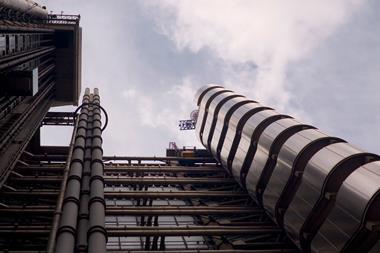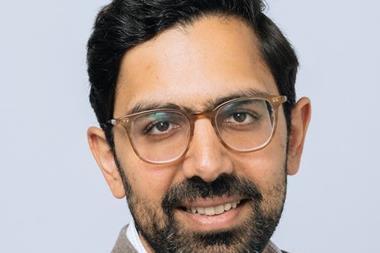Graeme Tappenden, a chartered structural engineer and managing director of Cameron Durley Consulting, looks at the modern approach insurers are taking to dealing with subsidence claims.
For most people, subsidence is something that others have the misfortune to suffer. Our houses are normally stable and in balance with the environment. We can rest assured that all is well.
Subsidence occurs when a building is no longer in complete harmony with its environment. This is because the equilibrium of the natural environment has changed. This change in the bearing strata may occur for a variety of reasons. The two most common causes are water leaking into the ground close to the building from defective household drains, or moisture extraction by a nearby tree causing shrinkage of a clay sub-soil.
Subsidence damage is often discovered when policyholders return home, perhaps tired from the long journey back from a summer holiday, and they notice a crack in a wall.
The crack may not have been noticed before, but now it appears to grow by the day, until the householders realise that they might have caught the subsidence disease. Who do they turn to for help?
They may recall an acquaintance down at the local pub; he had a subsidence claim and it took years to sort out. They may panic as they recall that he had to move out of his home for an eternity so that the builders could dig up the whole house. He is still concerned that the problem may not have been resolved properly, and the local estate agent has worried him that he may have difficulty in selling his house, even if he could get up the courage!
They might develop a sense that their most valuable asset, the bricks and mortar in which they live, sleep and eat, may have become worthless. Similarly, they may pale at the thought of having to endure endless visits by experts in suits who seem not to have their best interests at heart, leaving them to face the discomfort and disruption to their family lives.
Emotional distress
These are just some examples of the emotional distress that people suffer when the mysterious illness of subsidence affects their home. This is especially true if the policyholder does not receive the appropriate support or does not have full confidence in advice given to them to put the problem right.
The emotional distress can sometimes be infinitely worse than the actual physical damage to the building.
Customers today, we are told, are to expect their insurance company to do more than just tell them that they might be covered if they can substantiate a claim. They are told to expect that just a simple telephone call will take the problem away.
If their car is damaged it will be collected from the front door, taken away for repair and then delivered back all shiny and clean, almost without any inconvenience at all. The modern expectation of insurers is that they become the experts taking the problem fully on board and off policyholders' shoulders.
In this modern environment, subsidence should be no different.
The more innovative insurers, and those who expect to insure our homes for many years to come, recognise this and they have spent considerable time and effort understanding not only the subsidence problem but also their customers' expectations. These insurers understand that they need greater management of the entire repair process.
The insurance industry is rapidly changing to treat subsidence in a focused, highly-professional and managed way to proactively address not only the technical issues, but also the concerns of the policyholder.
Similarly, having the technical expertise to diagnose the true cause of the building damage together with the resources to confirm, control or remove the environmental issues influencing the damage are still essential but these skills, alone, are not sufficient.
New breed of experts
To support the modern approach a new breed of subsidence expert companies must have both the resources to rapidly respond to the call, and the subtle people skills to recognise the potential distress to the policyholder.
The damage to the structure may appear to be an unwelcome problem to the policyholder, but the professional will explain, listen carefully and then explain again. The process typically involves the need for the appropriate level of ground and other investigations necessary to determine the true causes of the damage.
The process can be likened to confirming the cause of a pain in the leg.
Just as a doctor may require the assistance of an X-ray or a scan to establish the exact nature of an injury, and until the results are known be unable to give proper treatment, it may not be possible to determine the cause of subsidence damage without additional investigations.
The professional must arrange the investigative work with the minimum of disruption and seek to calm the policyholder's fears during this potentially traumatic experience.
Environmental sensitivity
This new breed of professional must also recognise the environmental importance of trees and be prepared to modify the approach accordingly. The delicate balance between the potential for further damage to the building caused by the future uncontrolled growth of trees and the essential requirement to economically but effectively repair the structure in the long-term must be struck.
Prior to the damage, the building and the tree have co-existed in harmony. The tree may have become uncontrolled causing the structural damage to the building. The new professional will seek to readdress the equilibrium between tree and building without the need to embark on a systematic deforestation of this green and pleasant land.
Similarly, insurers have no wish to pursue a scorched earth policy. He may recommend a scheme of tree management to restore the delicate balance of nature.
If the tree has outgrown its environment and felling is the only option, planting a new sapling will redress the environmental balance and allow the future situation to be effectively managed.
Good tree husbandry is the duty of urban society if we are to live in harmony with our environment. This management duty falls to tree-owners, often the local authority, which has both a legal and, just as importantly, social responsibility to act to control the influence trees have on our homes.
The new professional must have the technical expertise to both design and manage effective and economic damage repair schemes. This may include more intrusive foundation strengthening, or it may be the appropriate use of masonry reinforcement and bonding techniques, all to achieve the proper repair of the building damage.
Customer needs
The subsidence professional will also be well tuned to customer needs, ready to act to maintain their confidence during the resolution of an insurance claim. The whole process must be handled in a non-confrontational manner, avoiding the alienation frequently associated with badly-handled subsidence claims, with all aspects of the claim being carefully explained to the policyholder.
It is recognised that occasionally a policyholder could view the potential of a subsidence claim as an opportunity to seek funding from insurers for maintenance of the property. When this arises, the professional must ensure that an impartial approach is taken to all aspects of the claim and maintain the respect and confidence of the policyholder.
Subsidence is no longer the domain of the part-time expert. The professional management of subsidence is now a specialist discipline. The driving force is high quality, high service standards and high customer care combined with the economies of scale.
The process is sometimes misunderstood by industry onlookers, or building professionals, and those seeking to gain from turning tragedy into confrontation.
The new professionals are happily ready for the challenge handed to them by Lord Woolf's reforms. The new initiatives launched under the Woolf procedures require all professionals to work together to avert disputes or to resolve any difficulties with the utmost haste.
This applies especially to local authorities. Those insurers which have recognised the need for a specialist subsidence professional are ahead of the game, working towards the ethos of non-confrontational resolution of claims.
However, there are sound commercial reasons for developing subsidence professionals who are trained and experienced in resolving claims.
Winning repeat business
To those in the business of selling repeat policies, the continued satisfaction of the policyholders is of the utmost importance.
Continuing to insure an effectively repaired building carries no greater risk than that presented by the postcode norm. In fact, the risk is often reduced.
Commonsense
Thankfully, commonsense generally prevails so that policyholders and innovative insurers have come to understand that the handling of subsidence claims has to focus on the balance of technical and emotional issues.
Suffering the illness of subsidence need not be a traumatic experience.
While the ailment is certainly not welcome, the remedial process leading to an equitable solution can in fact, be relatively painless, if it is properly managed.
Hosted by comedian and actor Tom Allen, 34 Gold, 23 Silver and 22 Bronze awards were handed out across an amazing 34 categories recognising brilliance and innovation right across the breadth of UK general insurance.











































